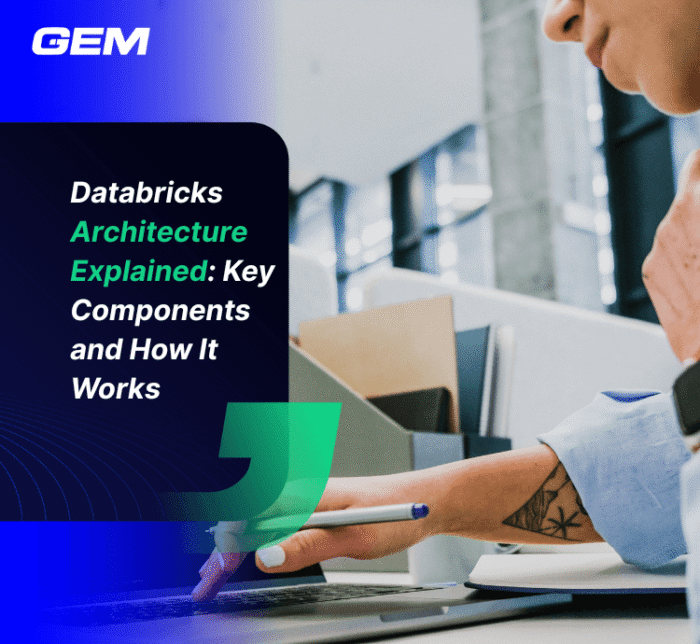Contents
As software systems scale across cores, clusters, and distributed environments, the way tasks are handled at runtime becomes increasingly strategic. Parallel concurrent processing contributes significantly to how modern architectures manage performance, throughput, and fault tolerance. For engineering leaders, understanding the operational differences between these models contributes directly to system design, resource planning, and long-term maintainability. This article breaks down the concepts, execution environments, and use cases shaping concurrent and parallel processing in practice.
What is Concurrency?

Concurrency refers to the ability of a system to manage multiple tasks that make progress independently. These tasks can be initiated, paused, and resumed without waiting for others to complete. In practice, concurrency organizes workflows so that different operations appear to run at the same time, even on a single processor.
This approach is often used in systems that handle high volumes of I/O operations or user interactions. A web server responding to multiple client requests or a mobile app that downloads data while staying responsive are routine examples. Concurrency helps maintain responsiveness and task coordination, especially in environments where resource availability varies or workloads shift dynamically.
What is Parallel Programming?
Parallel programming focuses on dividing a task into smaller units and running them at the same time across multiple processing units. These units often work on the same problem in a coordinated manner, aiming to complete the task faster by distributing the effort.
This model is common in workloads that demand high computational throughput. Examples include training machine learning models, rendering graphics, or processing large datasets. Parallel programming typically depends on multi-core processors, GPU arrays, or distributed compute environments. The goal is to complete complex processing in less time by executing code paths simultaneously under controlled synchronization.
Concurrent Processing vs Parallel Processing: Key Distinctions

Concurrency and parallelism are often discussed together, but they solve different problems. Both deal with multiple tasks, yet the way these tasks are structured, scheduled, and executed reflects distinct architectural intent. Differentiating the two helps teams align system behavior with design priorities – that can either be responsiveness, performance, or fault isolation.
Task Execution
- Concurrent processing allows multiple tasks to make progress independently. They are scheduled and managed in a way that gives the impression of simultaneous execution, even on a single processor. The focus is on managing multiple flows of control.
- Parallel processing breaks a task into smaller sub-tasks that run at the same time across different processors. These sub-tasks often work toward the same goal and may require coordination to complete.
Hardware Dependency
- Concurrency is a logical design concept that can run on single-core or multi-core systems. It relies on scheduling and context switching to manage multiple operations.
- Parallelism depends on physical resources. It requires multiple execution units, such as CPU cores or GPU threads, to run tasks truly at the same time.
System Objectives
- Concurrent systems aim to maintain responsiveness and handle multiple interactions or events without blocking. This is valuable in applications that involve I/O, user interfaces, or asynchronous communication.
- Parallel systems target raw processing speed. The goal is to complete heavy computations in less time through distribution and simultaneous execution.
Programming Complexity
- Building concurrent systems requires managing task coordination, time-sharing, and shared resource access. Developers often work with threads, message queues, and event loops.
- Parallel programming introduces its own challenges, including workload partitioning, synchronization, and data consistency. It demands careful planning to avoid overhead from communication and contention.
Examples in Use
- Concurrency is common in backend services handling API requests, financial systems processing thousands of asynchronous transactions, or stream processing engines managing real-time events.
- Parallelism is applied in scientific computing, machine learning model training, video encoding, and simulations that process large datasets.
Summary Table: Concurrent vs Parallel Processing
| Dimension | Concurrent Processing | Parallel Processing |
| Task Behavior | Tasks progress independently, may be interleaved | Tasks run simultaneously and work toward a shared goal |
| Execution Model | Time-shared on one or more processors | Executed in parallel on multiple processors |
| Hardware Requirement | Can run on single-core or multi-core systems | Requires multi-core or distributed systems |
| Primary Objective | Maintain responsiveness, manage multiple interactions | Increase throughput for compute-heavy workloads |
| System Focus | Coordination, scheduling, latency management | Performance, distribution, workload balancing |
| Common Use Cases | Web servers, reactive apps, messaging platforms | Data analytics, AI training, scientific simulations |
Parallel Concurrent Processing in Multi-Node Systems

In distributed computing environments, parallel concurrent processing is used to coordinate large volumes of tasks across multiple nodes, each operating with its own memory and compute resources. These systems are designed to support high-throughput workloads, fault isolation, and dynamic resource allocation.
A typical multi-node setup consists of several machines (nodes), each running one or more concurrent managers. These managers are responsible for executing scheduled jobs, which may be compute-intensive, time-sensitive, or both. The architecture allows for horizontal scaling, where workloads are distributed across nodes based on specialization rules, availability, or processing capacity.
Execution Models Across Environments
Parallel concurrent processing is deployed in various system configurations, each with specific characteristics:
- Clustered Systems
Nodes share a common disk pool, while each runs its own Oracle instance or service layer. Jobs are distributed across nodes, allowing the system to recover from node failure without interrupting overall execution.
- Massively Parallel Systems
All nodes exist within a single hardware platform. Each node runs separate processes, and tasks are divided across them to accelerate batch jobs or high-volume computations.
- Homogeneous Networked Systems
Identical machines are connected over a local network. Concurrent managers on each machine communicate with a central database or a cluster of databases. This setup supports distributed job execution while maintaining a unified data layer.
Key Design Considerations
- Node Independence
Each node operates independently, with its own memory and compute resources. Synchronization is applied only when shared resources such as disk or database instances are involved.
- Manager Placement and Migration
Administrators can assign primary and secondary nodes for each concurrent manager. If a node fails, its managers migrate automatically, then return once the node is restored.
- Monitoring and Fault Recovery
Internal monitor processes track the health of concurrent managers and restart them when necessary. This mechanism supports high availability and reduces manual intervention.
- Unified Access to Logs and Outputs
Output files and logs generated on any node are accessible from other nodes in the system. This ensures that users and administrators can retrieve job results without needing to connect to the node where the job executed.
Parallel Concurrent Processing Use Cases

Parallel concurrent processing supports a wide range of business and technical operations where workload distribution, system responsiveness, and task reliability are key considerations. These are five practical examples where this model is applied to achieve operational efficiency and execution consistency.
- Enterprise Financial Closing
During the close of a fiscal period, financial systems often manage journal entries, currency revaluations, and intercompany eliminations. These tasks run at the same time across different nodes, each handling a specific ledger or region. This setup supports faster turnaround while keeping task boundaries clear.
- Claims Handling in Insurance
Insurance providers process high volumes of policy claims, each requiring multiple steps such as eligibility checks, document verification, and payment validation. Different job types are assigned to separate managers across nodes. This separation helps maintain flow across functions without creating processing delays.
- Manufacturing Order Management
Production systems often generate and track thousands of work orders each day. Job queues for order creation, component checks, and dispatch requests are distributed across nodes. Each node can take on tasks linked to a specific plant, product line, or shift, allowing systems to respond to operational load.
- Public Sector Document Processing
Government agencies that process permits, registrations, and compliance reports use concurrent managers to divide workloads by document type or region. When distributed across multiple systems, this structure helps maintain response time during periods of high demand.
- Digital Commerce Fulfillment
Retail platforms manage order capture, stock validation, and delivery coordination. Each task group is processed independently across locations using node-specific managers. Work is separated based on warehouse or product category, allowing systems to process more requests without queuing delays.
These examples reflect how distributed task execution is used to meet business-level throughput requirements while keeping systems responsive and organized.
These use cases point to a broader shift: systems are no longer designed around single-threaded efficiency but around distributed coordination, platform flexibility, and predictable execution. This is where GEM Corporation brings distinct value.
GEM Corporation is a technology partner that delivers tailored software and data solutions across industries where workload orchestration and parallel concurrent processing are core to performance. From financial systems with layered reporting logic to retail platforms with real-time fulfillment engines, GEM builds and modernizes architectures that align with operational complexity. Its services span multi-node deployment strategies, automation frameworks, data infrastructure transformation, and AI-powered process optimization, supporting execution at both system and business scale.
Conclusion

Parallel concurrent processing is central to how modern systems manage scale, coordination, and execution reliability. Its application spans industries, from finance and manufacturing to healthcare and public services, where task separation and system-wide throughput must align with operational demands. Whether through concurrent workflows, parallel execution, or multi-node deployment, organizations are shifting toward distributed models that reflect real-world complexity.
To explore how GEM can support your organization with parallel concurrent processing strategies tailored to your system landscape, contact our team for a direct consultation.





